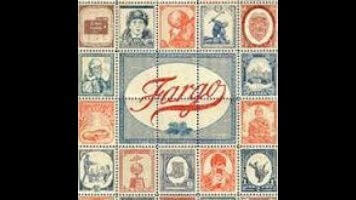In addition to their murder mysteries, each new season of Fargo has had a larger question looming over it. For the first, it was a matter of answering just what the anthology series, from creator Noah Hawley, could add to the Coen brothers’ new-classic black comedy. Hawley quickly justified the existence of the adaptation with those first 10 episodes, so when the second season arrived in 2015, the speculation centered on whether he could keep it up. Turns out fans needn’t have worried, as the Patrick Wilson-led season delivered more of the Coens’ mix of humor and malaise. Hawley’s even proven himself elsewhere on FX and in the drama genre with Legion, his revelatory take on superhero shows, which he happened to be working on while Fargo was filming earlier this year.
So just what does Fargo season three, which premieres Wednesday, have to contend with—that is, outside of explaining how competitive bridge plays into the latest series of unfortunate events? Well, Hawley and his stable of writers and directors have to find a way to maintain the quaint, out-of-time feel of previous installments despite having the latest batch of episodes take place in the same decade we’re living in. That’s not quite as pressing a concern as the previous question of quality, but there’s more history now than ever, which tests the porousness of each self-contained season. And recent cast interviews have already teased the return of a season one character. Hawley mostly pulls up stakes at the end of each season, though he did keep the Solverson bloodline running through decades between seasons one and two. That was the most obvious through-line, but the series has also had a few nods to the original film as well.
Season three offers a similar Easter egg hunt, while leaving one big hint right out in the open—the coveted item that sparks a brotherly feud is a vintage stamp depicting the myth of Sisyphus, which was the title of one of last season’s episodes. Few other images sum up futility so succinctly, which is something Fargo continues to trade in, so it’s no surprise that FX included it in the promotional materials for season three. Let’s just say you’ll get something out of that stamp collection whether or not you’re into philately. And with just two episodes made available for review ahead of the premiere—the scantest slice yet—you can bet even reviewers are eyeing it closely.
Despite the 30-year leap forward, Fargo’s template remains in place for this tale of sibling rivalry. Once again, the characters traverse great swaths of black-and-white roads to settle into locales left intentionally austere to underscore the fact that, however improbably they may play out for our entertainment, these things could happen anywhere. There’s the usual disclaimers about this being a true story that’s been fudged just enough to protect the identities of anyone involved preceding the showdown, which has an Old Testament feel to it, whether it recalls Cain and Abel or Jacob and Esau for you. The premiere, which Hawley wrote and directed, is even scored with gospel music and throat singing.
The whodunnit aspect is never Fargo’s biggest draw, though, despite its clever execution in each installment. So while there’s a ruthless efficiency to the latest death toll, we continue to scan the bystanders and grieving families for reactions—and Hawley has doubled down on these distractions for season three. Our latest boulder roller is, more often than not, Ray Stussy, who’s played by Ewan McGregor in a bald cap when he’s not donning a curly wig to play his own older brother, Emmit. They had a falling out over their inheritance, which Ray has never felt was properly squared away. Because Ray feels like his brother’s keeper, he works as a parole officer, where he also acts as confessor.
Although the family dynamic is more literal here, it continues to apply to the kind of clandestine organizations that are somehow always lurking in small-town America. The latest iteration is primarily represented by V.M. Varga (David Thewlis), an English businessman who’d fade into the background were it not for his impressive vocabulary. But his threats still manage to cut through the thick Minnesota cold (and accents). Also standing out like a sore thumb is Nikki Swango (Mary Elizabeth Winstead), whose very name is more sensual than just about anything from the first two seasons. But her appearance belies just how true to Fargo’s aesthetic her nature is, which we also see in the naming of this year’s lawful archetype, played by a luminous Carrie Coon. Although “Gloria Burgle” might be better suited to one of Ray’s parolees, here it’s the name of the deposed police chief, who’s still carrying out her duties to the best of her abilities.
The two available episodes lay the season foundation, which we’ve already seen the blueprints for a couple of times. There are some truly shocking moments early on, but it all just feels a bit too familiar. Luckily, the cast picks up the narrative slack; Winstead and Coon might both be playing thwarted women, but they’re basically fire and ice. McGregor manages to carve out distinct personalities in his dual performance, though the brothers do share a sense of exasperation with the other. His interactions with himself flow better than you’d expect, but it’s with Michael Stuhlbarg that he has the most chemistry. As Sy, Stuhlbarg is usually fulfilling more of the actual duties of a brother’s keeper, completing his friend’s sentences and otherwise covering his ass. In Fargo, what’s left unsaid can be chalked up to manners as much as building a mystery, but here it creates a comedic pas de deux that outshines any other pairing in this anthology series.
Once again, reviews by Zack Handlen will run weekly.










![Rob Reiner's son booked for murder amid homicide investigation [Updated]](https://img.pastemagazine.com/wp-content/avuploads/2025/12/15131025/MixCollage-15-Dec-2025-01-10-PM-9121.jpg)

























![HBO teases new Euphoria, Larry David, and much more in 2026 sizzle reel [Updated]](https://img.pastemagazine.com/wp-content/avuploads/2025/12/12100344/MixCollage-12-Dec-2025-09-56-AM-9137.jpg)




